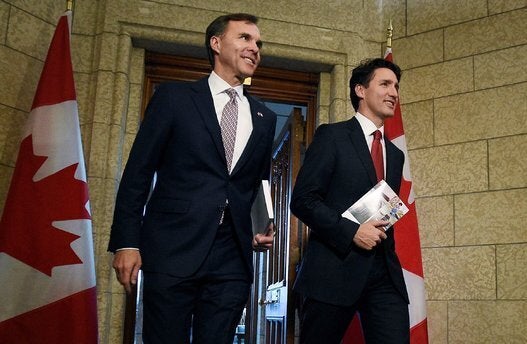As I went through the details of the federal budget -- the second for this Liberal government -- and considered the new ideas and, too often, the limits placed on those ideas, one thought kept coming to mind.
The new federal budget is high on symbolism, and low on details and money.
Take the announcement of $7 billion for child care and 40,000 new child-care spaces over three years. An announcement like that sounds great, and certainly more affordable child-care spaces are needed.
Unifor has been calling for this sort of action for years now. Affordable child care would significantly help women and families to build better lives. We cannot have true equity until the barriers keeping women out of the workforce are taken down.
But for any of that money to flow and for any of those spaces to be created, the provinces and the territories need to sign on to the idea and work with Ottawa to come up with a plan. In the end, that means we have the symbolism of a new child-care strategy, but no actual plan and no money until the plan is in place. Working families are still left waiting.
Another example is the new $1.26 billion Strategic Innovations Fund, which wraps up several smaller funds, including the much-criticized Automotive Innovations Fund, into one and adds another $200 million over five years to the pot.
Again, that sounds good, but there are no details. And it is those details in fine print that matter.

A fund that is supposed to help spur new investments and create good jobs barely merits one page in a 277-page document. Innovation Minister Navdeep Bains will likely release details of the plan in the coming months, but I'd rather have seen them come out with the budget. Let's be clear: a budget is not just about numbers and dollars. It is the government's political document to outline and set priorities, but this one leaves many things too open for interpretation on an actual plan.
Certainly, there has already been a lot of discussion about how such a fund should operate. The auto industry, for instance, has consistently said that a simplified system of dealing with government --and grants, not loans -- are the way to go. The old Automotive Innovation Fund got both points wrong, and this new fund must not repeat that mistake.
When Bains went to Alliston last month to announce a new program with Honda, the federal government offered grants, not loans -- but with no commitment that any future federal money would be also grants. This week's budget was a lost opportunity to clear up that ambiguity.
The government is headed in the right direction, it just might take longer to get there.
Investment is needed to fuel our economy, but this budget appears to only offer sprinkles of cash. There is an added $200 million to manufacturing investment. This amount will be rolled out over five years, and that is just not a lot when it comes to the needs of the industry to both build and grow good-paying jobs. In our last round of talks with the Detroit Three automakers last fall, Unifor alone negotiated $1.6 billion in auto investments in Canada -- more than the entire Strategic Innovations Fund.
After the struggles Unifor has had defending the rights of taxi drivers and of the public to a safe and regulated cab industry, it was good to see the GST being applied to ride-sharing services. But there was no such measure for Airbnb, which is hurting the hospitality industry and disrupting communities. Another missed opportunity.
All that said, it is all too easy to criticize a budget. An important thing worth noting is the general direction the 2017 budget shows. The government is headed in the right direction, it just might take longer to get there. It is through our critical views and demand for more that we the people and voters of Canada can collectively hold the government to account and push for the needs of working people.
I have definitely certainly seen worse budgets. The budgets of the previous Harper governments were mean-spirited and consistently offered policies that hurt working families.

The first two budgets of the Liberal government, however, show a clear intention to help working Canadians, their families and their communities build stronger futures.
This federal government is definitely on a new path, and it is a critical path that incorporates and weaves in an important gender analysis to the budget and the budget process. The gender-based analysis of this year's budget is a first, and it is a welcomed beginning. Although it was tucked into the back of the document, I know this is a crucial step for what's to come. It contains a decent assessment of the impact of government policies on women and how they foster inequity, and even a few first steps on how to address them.
Evaluating numbers, investments and how those apply to women can help all of us better understand the inequality that exists and how the system of budgets can reduce that gap between women and men. This year's analysis was a first step. A somewhat tentative step, perhaps, but a good step.
There is no doubt that I would like to see the measures of this budget to come in faster, but I take some heart that the country is at least now moving after a decade of hurtful policies coming out of Ottawa.
And certainly this is a step in the right direction.
Follow HuffPost Canada Blogs on Facebook
Also on HuffPost:
